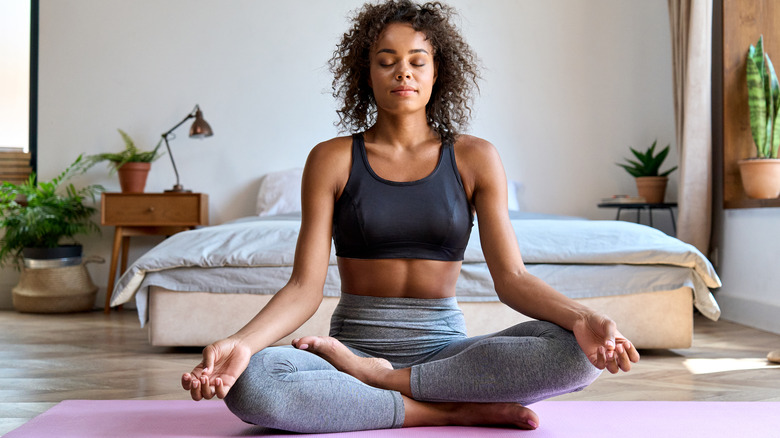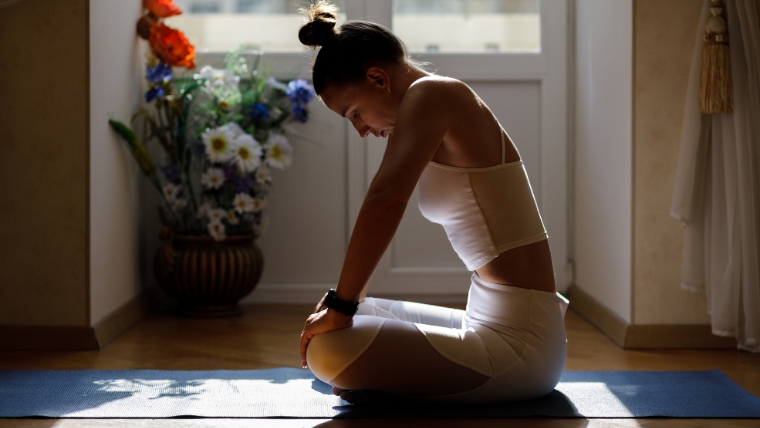Mental health yoga is an extensive approach to wellbeing that goes beyond simple physical postures. It incorporates conventional yoga’s principals with an emphasis on mental and emotional well-being. Mindfulness, movement, and breathwork are all combined in mental health yoga to address the complex relationship between the mind and body.
The physician director of psychiatry and telepsychiatry at Houston Methodist has been doing yoga for over ten years to maintain her own physical and mental well-being. It is necessary for her to retain concentration, clarity, compassion, and good judgement even on the worst days since she works with people who are experiencing mental health crises on a regular basis.
Yoga appears to have this potent fusion of physical exercise with aspects of awareness, meditation, and deep breathing. This comprehensive package improves our physical well-being while also enhancing heart and brain health. Furthermore, the long-term cognitive and emotional gains are invaluable.”
Yoga is a mind-body practice with thousands of variations that has been practiced for thousands of years. However, its fundamental idea is to promote relaxation with the use of breathing techniques, meditation, and strengthening and stretching exercises. Regular practitioners talk about how yoga helps them with everything from strength, endurance, and muscular tone to mood and emotions.
The Link Between Mind and Body in Mental Health Yoga
Essential to Mental Wellness In yoga, the mind-body connection is emphasised. Through the practice of mindfulness and breath awareness while in yoga positions, people can achieve a deep sense of well-being. This integrated approach recognises the interdependence of physical and mental health.
Yoga for Mental Health
Set off on a path of self-exploration by practicing mental health yoga. A harmonic balance that improves mental health is created by incorporating yoga into everyday routines, dedicated stress-relieving meditations, and certain postures that boost mental well-being.
The benefits of yoga for mental and physical health
Yoga is a low-impact activity that has been demonstrated to increase endorphins and GABA (gamma-aminobutyric acid), two happy chemicals in the brain, while also lowering stress hormones in our bodies. These feel-good hormones contribute to elevated happiness and reduced anxiety.
The benefits of yoga are also thought to slow down the ageing process over time, as there is less shrinkage in the parts of the brain responsible for processing information and storing memories. Incorporating yoga into our daily routines can help guard against the decline in memory and cognitive function that comes with age.
Researchers contrasted 45-minute yoga practitioners’ brain imaging and chemical assessments with those of those who engaged in sedentary relaxation techniques like reading or listening to music. Those who have done yoga have higher amounts of beneficial brain chemicals.
Through the activation of the parasympathetic nervous system and the decreasing of negative emotions such as despair, anxiety, and rage, yoga can help reduce our fight, flight, or freeze response.
The Physical Advantages of Yoga for Mental Health
Taking Part in Mental Health Numerous health advantages of yoga exist. Through conscious movement and improved strength and flexibility, the practice improves physical health overall. It’s a journey towards a healthier, more robust body, rather than merely an exercise routine.
Yoga is accessible to even the most rigid people.
For those of us who think we’re not flexible enough to do a body pretzel on a yoga mat, what about us?
“The first stage for those just starting out is to learn how to concentrate on the sensation of breath entering and leaving the body. You’re not concerned with other people’s thoughts, views, judgements, or other stresses and pressures if you’re totally in tune and focused on that.”
Yoga is a lifelong, non-competitive type of exercise that enables people to connect with a supportive group, even a virtual one, in contrast to so many physical pursuits that get harder as people age. It can also be a solitary activity, done within a set period of time set aside to decompress and concentrate on oneself. Don’t stress over adaptability. The mindfulness component of yoga is just appreciating your body for what it can achieve in the current moment and embracing yourself and your body as you are today. This is one of the lovely things about yoga.
How to begin and maintain a yoga practice
Nearly two years of greater social alienation and isolation were brought about by COVID-19. Scheduling in-person yoga sessions became challenging, if not impossible. But even whether practiced electronically, with friends, strangers, or a lone instructor, yoga fosters community.
Developing a yoga practice is a path to betterment. It starts with embracing who you are on all levels and then reaping the ensuing natural mental and physical rewards. A little more than ten minutes daily can significantly enhance mood, reduce anxiety, and reduce emotional reactivity.
SUMMARY
Mental health yoga becomes a potent ally in the quest for a balanced and healthy existence. People may take a revolutionary step towards improved mental well-being by accepting the comprehensive philosophy of mental health yoga and realising the complex relationship between the mind and body.
It is now time to make the initial move. By practicing mental health yoga, you may elevate your mind and see the great changes it brings about in your life.
FAQs on Mental Health Yoga
-
Is it appropriate for new practitioners?
Of course! Practices offered by Mental Health Yoga are appropriate for beginners as well as all skill levels. Begin with easy routines and work your way up.
-
For best results, how often should I do it?
Maintaining consistency is essential. For observable gains in mental health, try to attend three or more sessions each week.
-
Is it possible to perform mental health yoga at home without a teacher?
Although self-practice is feasible, getting advice from a qualified instructor guarantees a safer and more efficient experience.
-
Are there certain yoga positions that help with stress and anxiety?
Indeed, several yoga positions are recognised for their ability to reduce stress. A few of the best poses for lowering anxiety are Child’s Pose, Downward Dog, and Legs Up the Wall.
-
How long does it take for MHY to start showing results?
Each person experiences advantages at a different pace. It could take a few sessions for some people to notice improvements, while it might take longer for others. Patience and consistency are essential.
-
Is it possible to combine established mental health therapy with mental health yoga?
Of course! Yoga for mental health can support conventional therapy. To develop a comprehensive strategy for mental health, it is imperative to engage with mental health specialists.
-
Is there an age limit on mental health yoga practice?
People of all ages can benefit from mental health yoga. It is possible to make adjustments to accommodate varying physical capabilities and medical situations.
-
How can I set up a peaceful space in my house for MHY?
For mental health yoga, little changes like soft lighting, relaxing music, and the use of essential oils may all contribute to a peaceful environment. Discover what best suits you to improve the whole experience.


